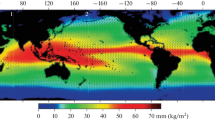Abstract
Electromagnetic radiation emitted from a source carries momentum. Thus, the dissipation of waste thermal energy can produce disturbance forces on spacecraft surfaces if the energy is not dissipated in a symmetric pattern. This force can be computed for a plate element as the quotient of the radiated power in normal direction and the speed of light. Depending on mission and spacecraft design the resulting surface forces have to be included into the disturbance budget. At ZARM an elaborated method for the exact modeling of the disturbances caused by heat radiation was developed which can be used for any satellite mission with high requirements on perturbation knowledge (e.g. LISA, LISA pathfinder, MICROSCOPE). The method which will be presented in this paper is based on raytracing and finite element (FE) thermal analysis. As a demonstration of the potential of the method, preliminary results acquired with a test case model of the Pioneer 10/11 Radioisotopic Thermal Generators (RTGs) will be shown.
Similar content being viewed by others
References
J. Anderson, P. Laing, E. Lau, A. Liu, M. Nieto, S. Turyshev, Indication, from Pioneer 10/11, Galileo, and Ulysses Data, of an apparent anomalous, weak, long-range acceleration. Phys. Rev. Lett. 81, 2858 (1998)
ANSYS Inc., ANSYS Theory Manual ANSYS Release 9.0 (2004)
H. Coxeter (ed.), Introduction to Geometry (Wiley, New York, 1961)
F. Hell, Grundlagen der Waermeuebertragung (VDI, Dusseldorf, 1982)
S. Kabelac, Thermodynamik der Strahlung (Vieweg, Braunschweig/Wiesbaden, 1993)
C. Markwardt, Independent confirmation of the Pioneer 10 anomalous acceleration (2002). arXiv:gr-qc/0208046
NASA Ames Research Center, Pioneer Program. Tech. Rep. PC-202, NASA Ames Research Center, Moffet Field, California (1971)
J. Reddy, D. Gartling, The Finite Element Method in Heat Transfer and Fluid Dynamics (CRC, Boca Raton, 1994)
B. Rievers, C. Lämmerzahl, H. Dittus, M. List, S. Bremer, H. Dittus, New powerful thermal modeling for high precision gravity missions with application to Pioneer 10/11. New J. Phys. 11, 113032 (2009), 24 pp
B. Rievers, S. Bremer, M. List, C. Lämmerzahl, H. Dittus, Thermal dissipation force modelling with preliminary results for Pioneer 10/11. Acta Astron. 66(3–4), 467–476 (2010)
L.K. Scheffer, A conventional physics explanation for the anomalous acceleration of Pioneer 10/11 (2001). arXiv:gr-qc/0108054v1
Teledyne Isotopes, SNAP-19 Pioneer F&G Final Report. Tech. Rep. IESD 2873-172, Teledyne Isotopes, Energy Systems Division, Timonium, Maryland (1973)
S. Theil, Satellite and Test Mass Dynamics Modeling and Observation for Drag-free Satellite Control of the STEP Mission (Shaker, Aachen, 2003)
S.G. Turyshev, N.N. Nieto, J.D. Anderson, Study of the Pioneer Anomaly: A problem set. Tech. Rep. 04.80.-y,95.10.Eg,95.55.Pe, Jet Propulsion Laboratory, California Institute of Technology, Pasadena, California (2005)
Author information
Authors and Affiliations
Corresponding author
Rights and permissions
About this article
Cite this article
Rievers, B., Lämmerzahl, C. & Dittus, H. Modeling of Thermal Perturbations Using Raytracing Method with Preliminary Results for a Test Case Model of the Pioneer 10/11 Radioisotopic Thermal Generators. Space Sci Rev 151, 123–133 (2010). https://doi.org/10.1007/s11214-009-9594-6
Received:
Accepted:
Published:
Issue Date:
DOI: https://doi.org/10.1007/s11214-009-9594-6



